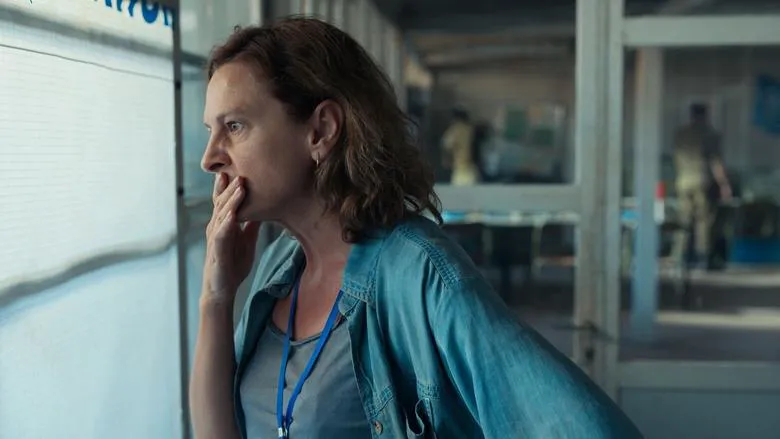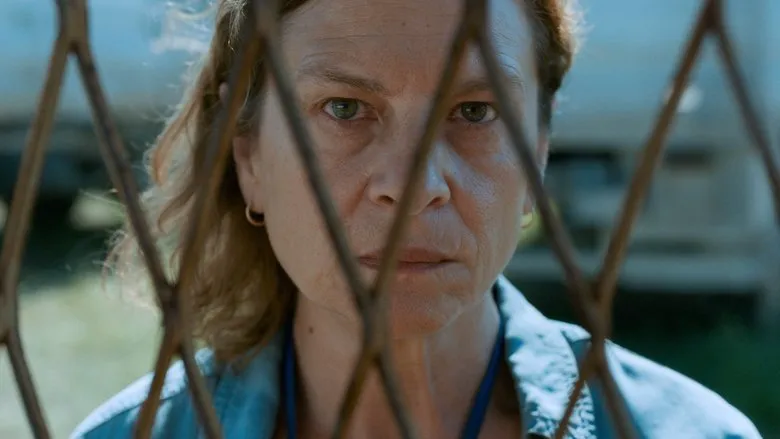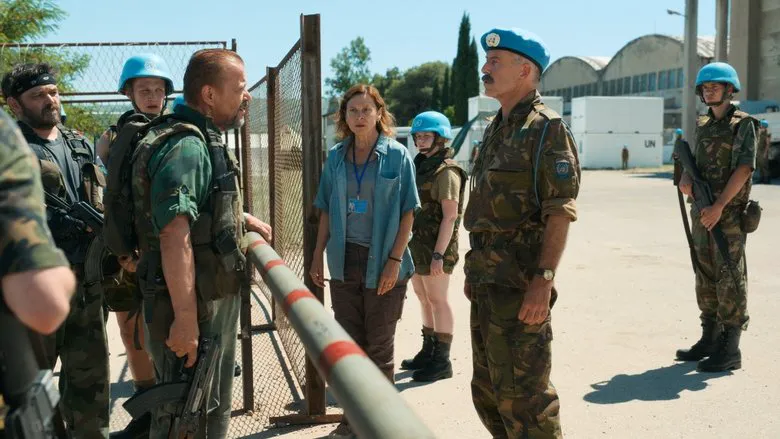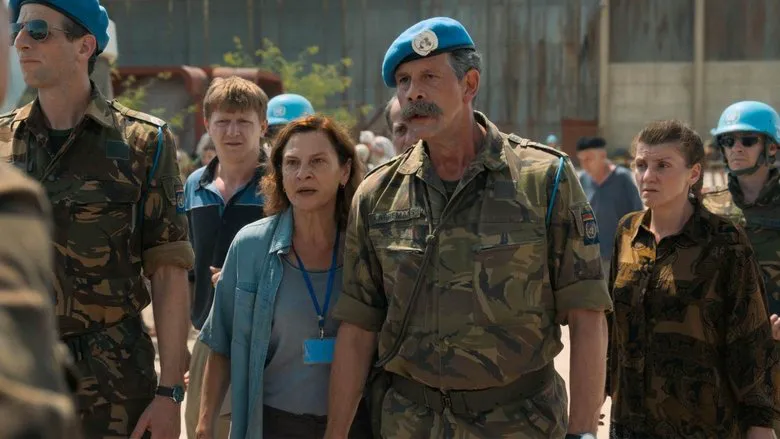“Where Are You Going?”: The Haunting Genesis of “Quo Vadis, Aida?”
Jasmila Žbanić’s profoundly impactful “Quo Vadis, Aida?” stands as a harrowing cinematic testament to one of the darkest chapters of recent European history: the Srebrenica massacre of 1995. More than just a retelling, the film plunges viewers into the epicenter of the unfolding tragedy through the eyes of a single, desperate woman, Aida, a translator caught between professional duty and the primal urge to save her family. Its creation was not merely filmmaking; it was an act of profound remembrance, deep research, and emotional courage.
The Director’s Urgent Vision: Bearing Witness
At the heart of “Quo Vadis, Aida?” is the unwavering vision of Bosnian director Jasmila Žbanić. Having lived through the Bosnian War herself, Žbanić felt a profound responsibility to tell this story accurately, empathetically, and with a universal message. Her previous works often navigate the scars of conflict, but “Aida” represented her most direct confrontation with the raw brutality and systemic failures that led to the atrocity.

Žbanić spent years on meticulous research, poring over UN reports, tribunal testimonies, survivor accounts, and historical documents. Her goal was not to sensationalize, but to reconstruct the chaos and mounting dread within the UN compound and Srebrenica itself, capturing the excruciating hours when hope flickered before being extinguished. She aimed to demystify events, revealing how, minute by minute, decisions (and inaction) led to unthinkable consequences. This dedication to historical veracity is evident in every frame, lending the film an almost documentary-like authenticity.
Crafting the Unimaginable: Recreating Srebrenica’s Last Days
Bringing the intensity of Srebrenica to the screen was an immense challenge for the production team. The film deliberately focuses on the cramped, despair-laden confines of the UN compound and the desperate movements within Shrebrenica as thousands sought refuge. The set design meticulously recreated the overcrowded, unsanitary, and increasingly hopeless conditions, using authentic props and set pieces to convey the feeling of a besieged sanctuary.

The sheer number of extras required to portray the thousands of refugees added a layer of logistical complexity, but also contributed significantly to the film’s chilling scale. Many extras were from the region, some having personal connections to the events, which imbued the performances with an unspoken, profound weight. The sound design, with its constant undertone of artillery fire, distant screams, and the cacophony of displaced people, acts as another character, relentlessly building tension and a sense of impending doom.
The Face of Tragedy: Jasna Đuričić’s Haunting Portrayal
At the heart of the film’s emotional power is Jasna Đuričić’s breathtaking performance as Aida Selmanagić. Đuričić brings a raw, urgent intensity to the role, transforming Aida into every parent, every individual caught in a nightmare. Her preparation involved not just memorizing lines, but internalizing the immense moral burden of Aida’s position: a translator for an international force that ultimately fails, while her own family’s lives hang by a thread.

Đuričić masterfully conveys Aida’s gradual disillusionment, her frantic pleas turning to desperate manipulation, and ultimately, her profound grief and determination to protect what little remains. Her performance is physical, with every exhausted breath, every strained look, communicating the unbearable weight of her responsibility. It is a nuanced portrayal of heroism not through grand gestures, but through sheer, resilient perseverance in the face of unimaginable horror.
The Unseen Conflicts: Moral Complexities and Global Inaction
“Quo Vadis, Aida?” extends beyond mere historical reconstruction; it delves into the agonizing moral dilemmas faced by individuals and institutions during mass atrocities. The film critically examines the often-paralyzing bureaucracy of the United Nations, symbolized by characters like Lieutenant-Colonel Karremans, whose hands are tied by distant commands and protocols. The “Quo Vadis?” (Latin for “Where are you going?”) in the title isn’t just a question for Aida; it’s a profound query directed at humanity, at international bodies, and at the world that stood by as Srebrenica unfolded.

The film forces viewers to confront uncomfortable questions about responsibility, the limits of intervention, and the cost of moral compromise. It highlights the vast chasm between humanitarian ideals and the grim realities of conflict, suggesting that even with good intentions, institutional inertia and political calculations can lead to catastrophic individual suffering.
A Lasting Plea: The Film’s Unforgettable Impact
Upon its release, “Quo Vadis, Aida?” garnered universal critical acclaim, earning an Oscar nomination for Best International Feature Film and winning numerous awards, including several European Film Awards. Beyond accolades, its true impact lies in its function as a powerful educational tool and a haunting reminder.

The film ensures that the victims of Srebrenica are not forgotten, and their story is told with the dignity and truth it deserves. It challenges viewers to reflect on human nature in its darkest manifestations but also on the extraordinary resilience and love that persists even in the face of absolute devastation. “Quo Vadis, Aida?” is not just a film about the past; it’s a resonate plea for vigilance, intervention, and humanity in the face of potential future atrocities. It implores us all to ask: “Where are we going?” if we fail to learn from such unspeakable tragedies.